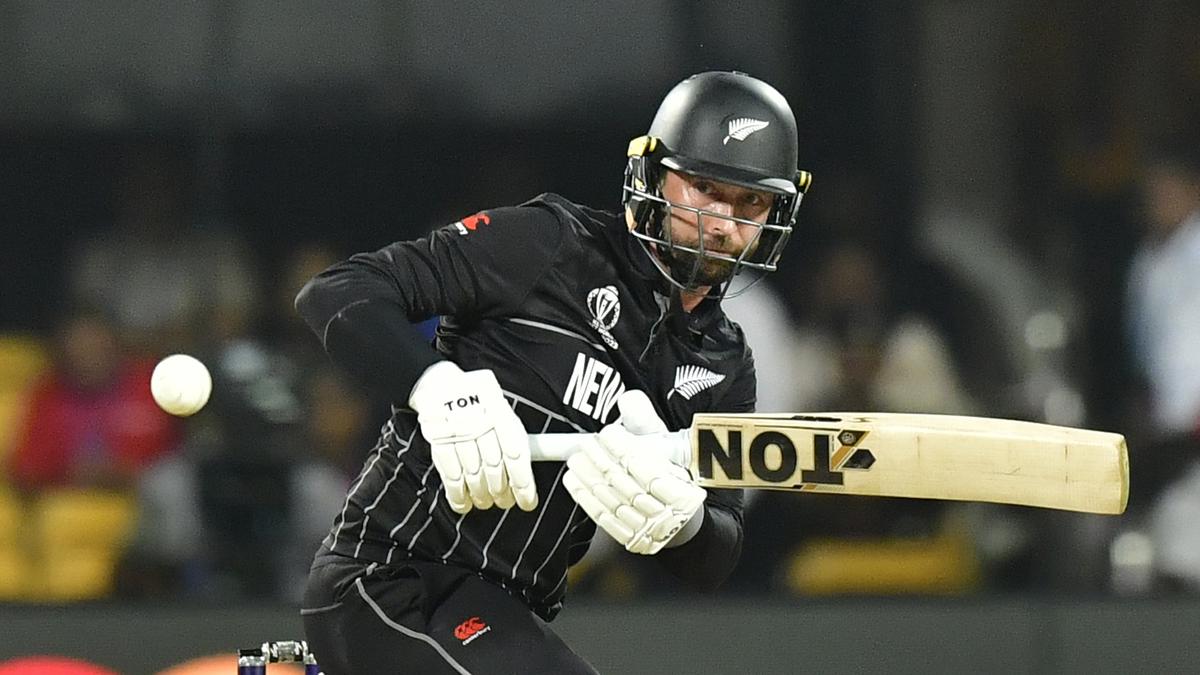Devon Conway: Don’t see why two-bouncer rule can’t be the norm in T20Is in future
New Zealand wicketkeeper-batter Devon Conway is currently recovering from the injury he sustained during the second T20I against Australia in Auckland back in February. He had fractured the joint of his left thumb and subsequently underwent surgery. Conway, who played a crucial role in CSK’s title victory in the 2023 IPL, will miss the whole IPL this year and is currently focusing on getting ready for this year’s T20 World Cup, which will be held in the USA and the West Indies in June.
In a chat with Sportstar, Conway talks about his time with the New Zealand cricket team, the evolving nature of T20s and whether international teams are more risk-averse than franchise sides.
You made your international debut in 2020. How do you look back on your progress as an all-format player?
I’ve been fortunate to play four years of international cricket across three different formats, allowing me to travel to various parts of the world and adapt to diverse conditions. For me, it’s an ongoing journey of striving to improve in each format, aiming for greater consistency and effectiveness. There’s an element of adaptation and also a focus on keeping things as simple as possible. It’s about elevating my intent and refining shot selection across different formats; that’s what I look to control.
New Zealand has generally been an aggressive team in recent years. Have there been discussions regarding adopting the same approach in the lead-up to the 2024 T20 World Cup?
The way of playing these days is naturally aggressive; it’s probably inspired by the franchise leagues around the world. It hasn’t been something we’ve spoken specifically about, but there is an awareness being created throughout world cricket that everyone’s going to look explosive, especially inside the PowerPlay. It might differ based on the conditions we are faced with in different parts of the world. We’ve got lots of depth in our batting line-up, and some experienced big hitters down the order — guys like Jimmy Neesham have been in and around the setup for a long time. As an opener, you have that in the back of your mind. I can play with freedom, knowing that if it is not my day, then someone down the order could contribute to the team’s cause. That said, it’s not just us. Most countries have that kind of batting depth these days.
Matchups are a big part of T20 cricket. Since you are particularly strong against spin, teams tend to attack you with quicks. Do you think teams tend to overdo the matchups angle?
As a player, it’s still good to identify what’s a good matchup for you and exploit that — just having that freedom to know that this is my matchup and I’m going to commit to it. The key is to keep honing your skills on the side and continue to get better; maybe then I can take advantage of seamers in the future.
How enjoyable was it to bat with Rachin Ravindra in that 273-run partnership against England during last year’s World Cup? You two are best mates.
It was fantastic for him to seize the opportunity, with Kane [Williamson] unfortunately being injured. Losing an early wicket against England allowed Rachin to come in and play outstanding shots early on, cementing his place in the batting line-up.
He had a fantastic World Cup, and batting alongside him and forming that partnership, particularly against England, was special. We are really close friends on and off the field, and we worked hard in training even during the winter years. For us to have that stand in the opening World Cup match was special and something I’ll cherish for a long time.
You’ve been part of franchise T20 leagues around the world. Do you feel teams in T20 leagues are more open to innovation and risk than in international cricket?
I don’t think that’s necessarily the case. Sometimes in leagues, you are playing on pitches that are good for batting, especially in places like India, whereas the last T20 World Cup in Australia was, perhaps, more suitable for bowlers. In franchise leagues, they are trialling different methods to gain an advantage over opponents, so they are conditioned to have those high run-rates.
The IPL’s two-bouncer rule has become a popular tactic for fielding sides. As a batter, what are your thoughts on the rule’s efficacy and potential for implementation in T20Is?
The two-bouncer rule is a valuable addition, addressing a long-standing challenge for bowlers in T20 cricket. It has enabled them to keep batters guessing and exploit various blind spots they may struggle with, thereby creating ways to apply pressure on them in different phases. We’ve already seen some benefits of it in this IPL, and I don’t see why it can’t be the norm in international T20 cricket in the future.
Sony Sports Network has acquired the exclusive broadcast rights of New Zealand Cricket for seven years.


